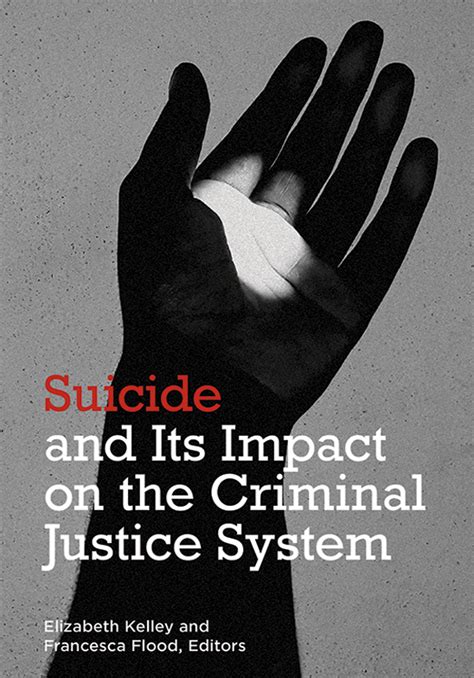Suicide, the act of intentionally taking one's own life, is a complex and multifaceted issue that has been debated and discussed across various cultures, historical periods, and legal systems. The question of whether suicide is a crime is a nuanced one, reflecting not only legal definitions but also societal attitudes, moral perspectives, and psychological understandings. Historically, many societies have criminalized suicide, viewing it as a punishable act against the state, religion, or community. However, modern legal and psychological perspectives have evolved, leading to a reevaluation of how suicide is approached and understood.
Historical Perspectives on Suicide

In ancient times, attitudes towards suicide varied significantly. For example, in ancient Greece and Rome, suicide was sometimes seen as an honorable act, especially when performed to avoid shame, capture, or tyranny. However, with the rise of Christianity, suicide came to be viewed as a sinful act, punishable by both earthly and divine law. The criminalization of suicide in many Western societies during the Middle Ages reflected this religious stance, with suicide being considered a grave offense against God and the community.
Legal Evolutions and Decriminalization
The legal status of suicide has undergone significant changes over time. In the 19th and early 20th centuries, many jurisdictions continued to criminalize attempted suicide, with penalties ranging from imprisonment to forced institutionalization. However, as societal attitudes began to shift, particularly with the advancement of psychology and psychiatry, the understanding of suicide as a criminal act began to erode. By the latter half of the 20th century, many countries started to decriminalize attempted suicide, recognizing it as a cry for help and a symptom of deeper psychological issues rather than a criminal act.
| Country | Year of Decriminalization |
|---|---|
| United Kingdom | 1961 |
| United States | Varying by state, but largely decriminalized by the 1970s |
| Canada | 1972 |
| Australia | Varying by state, but largely decriminalized by the 1970s and 1980s |

Current Legal and Social Perspectives

Today, in most countries, suicide is not considered a crime, but rather a public health issue. Efforts to prevent suicide focus on identifying and treating underlying mental health conditions, reducing access to means of suicide, and promoting social support networks. The legal system now more commonly interacts with individuals who have attempted suicide through the lens of healthcare and social services, aiming to provide them with the necessary support and treatment to prevent future attempts.
Mental Health and Support
The modern approach to suicide prevention emphasizes the importance of mental health support, early intervention, and community engagement. Governments, NGOs, and community organizations work together to provide resources for individuals at risk, including counseling services, hotlines, and support groups. This shift towards a health-focused approach reflects a deeper understanding of the complex factors contributing to suicide, including mental illness, substance abuse, social isolation, and economic hardship.
Key Points
- Suicide has historically been viewed as a criminal act in many societies but is now widely recognized as a public health issue.
- The decriminalization of attempted suicide in many countries reflects an evolving understanding of mental health and the need for compassionate support.
- Current efforts to prevent suicide focus on early intervention, treatment of underlying mental health conditions, and community support.
- Societal attitudes towards suicide are shifting, with an increased emphasis on promoting mental health, reducing stigma around mental illness, and encouraging open dialogue about suicide and suicidal feelings.
- International cooperation and research are crucial for developing effective strategies to reduce suicide rates and support those affected by suicide.
In conclusion, the question of whether suicide is a crime has evolved significantly over time, from being viewed as a punishable offense to being recognized as a complex public health issue requiring compassion, support, and treatment. As societal attitudes continue to shift and our understanding of mental health deepens, it is crucial that we approach suicide prevention with a multifaceted strategy that includes healthcare, social support, and community engagement.
What are the main factors contributing to suicide?
+The main factors contributing to suicide include mental health conditions such as depression and anxiety, substance abuse, social isolation, economic hardship, and previous trauma. Each individual’s situation is unique, and often, it is a combination of these factors that contributes to suicidal thoughts or behaviors.
How can I help someone who is suicidal?
+Helping someone who is suicidal involves listening to them without judgment, encouraging them to seek professional help, and supporting them in their treatment and recovery. It’s also important to help them stay connected to others and to reduce their access to means of suicide. If you or someone you know is in immediate danger, contact emergency services or a suicide prevention hotline.
What resources are available for suicide prevention and support?
+Resources for suicide prevention and support include national and local helplines, mental health services, support groups, and online resources. Many countries have dedicated suicide prevention hotlines and services that provide immediate support and guidance. Additionally, healthcare providers, therapists, and counselors can offer professional help and treatment.


